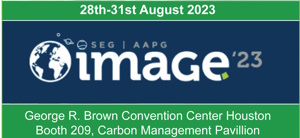Tuesday 22nd Aug 2017
Badley Ashton, alongside our partners Middle East Oilfield Services (MEOFS) will be at the Kuwait Oil and Gas Show and Conference where we look forward to greeting clients and partners, both established and new, in the main Exhibition Hall. Badley Ashton has vast experience in Kuwait, where we have undertaken over 70 projects, and more widely across the Middle East region where we have undertaken hundreds of projects, carbonate and clastic, and in both conventional and unconventional reservoirs. Dr. Boris Kostic, one of our Senior Clastic Reservoir Geologists will be in attendance throughout the conference and will be very happy to meet with you to discuss Badley Ashton’s services and how we can help you during these challenging times. If you would like to arrange a time to meet with Dr. Kostic, please contact us. Held at the Kuwait International Fair, Kuwait City, KOGS 2017 is the largest and most important gathering of the oil and gas industry in Kuwait, including petroleum geosciences, exploration & production, refining & petrochemical products and services. The conference runs from the 15th to the 18th of October, and the Exhibition from the 16th to the 18th of October, so why not call in and see what we can do for you? We look forward to meeting you at Booth #6301 where we can be found alongside our colleagues from MEOFS.If you would like to find out more about the Kuwait Oil and Gas Show and Conference, please click on the link below.MEOFS are Badley Ashton’s partners in Kuwait. They work with innovative technology providers to offer a wide range of oilfield services within Kuwait and the wider Middle East region. To find out more about MEOFS and the services that they offer, please click on the link below.Additionally, Badley Ashton staff are involved in two poster presentations during the conference. Boris Kostic and Nicolas Foote, alongside our clients from KOC will present a poster entitled “The value of integrated borehole image analysis to refine geological models: an example from the Greater Burgan Field, Kuwait”. Members of our Carbonate Teams, again working with our clients from KOC will present a poster entitled “Predictability of the sedimentological make-up and reservoir quality in the Mauddud Formation using FMI logs – a case study from a north Kuwait field “. Make sure you come along and take a look. To whet your appetite, the abstracts are given below.The value of integrated borehole image analysis to refine geological models: an example from the Greater Burgan Field, Kuwait.Boris Kostic, Bashar Al-Enezi, Jean Michel Filak, Fatma Al-Mahmeed and Nicolas FooteResistivity image logs are high-resolution tools that can help to unravel the depositional and structural organisation in a wellbore. They provide a particularly powerful dataset when calibrated against core, maximising their benefit for reservoir characterisation. This paper shows examples how very detailed image assessment from selected wells in the Greater Burgan Field has helped to constrain the stratigraphic model and depositional interpretations of the Cretaceous Burgan and Wara reservoirs.A multidisciplinary study of 123 cored wells, integrating core sedimentology, petrography, bio- and chemostratigraphy, wireline well and resistivity image logs, has delivered a robust stratigraphic and depositional framework for one of the most important reservoirs in the world’s largest siliciclastic oil field. A descriptive image facies scheme that has been calibrated against core and conventional well logs captures the lithological variation, sedimentary features and surfaces of the reservoir, providing a detailed proxy for the sedimentological evaluation of uncored intervals and wells.The sand-rich lower Burgan comprises fine to very coarse-grained fluvial channel sandbodies that are locally separated by laterally restricted mudrock baffles. Image and core analyses suggest that the majority of the sandstones are high-angle cross-stratified and form stacked bed/barforms within amalgamated channel sandbodies. Their consistent orientation towards the NE-E supports a low-sinuosity (braided) fluvial system resulting in a relatively simple, sheet-like depositional architecture across the field. Although slightly finer grained, the cored middle Burgan channel sandbodies are similar to those in the lower Burgan. However, palaeoflow data from the imaged wells show a higher directional spread in the order of c.60-90 with a dominantly N to E orientation of the sandy bed/barforms. Careful analysis of the orientation of the bounding surfaces between the sandstone packages indicates nearly equal proportions of obliquely and roughly parallel dip orientations in some wells. This suggests the formation of at least some lateral (point) bars and possibly the presence of higher sinuosity channels implying that sandbody architecture and fluid flow pathways could be more complex in the middle Burgan relative to the lower Burgan. Similar observations can be applied to the tidally-influenced channel sandbodies in the younger Wara Formation that were deposited in a network of incised valleys. Variability in barform/channel orientation with oblique and opposite dip directions as indicated by image data are likely to influence fluid flow patterns, which could be more complex than simply envisaged from the gross orientation of the valleys.The examples from the Burgan and Wara Formations highlight the value of integrated image analysis for reservoir characterisation by delivering a consistent descriptive framework, embedding different datasets. Predictability of the sedimentological make-up and reservoir quality in the Mauddud Formation using FMI logs – a case study from a north Kuwait field Abdulla Al-Awadi, Thomas Haines, Meriem Bertouche Aurélie Bonin, Michaël Fuchs, Matthieu Deville de Periere, Prasad Challa and Salman ZaidiThe Late Albian Mauddud Formation, which is composed of inner ramp carbonates and deltaic clastics, hosts prolific hydrocarbon reserves in Kuwait and across the Arabian Gulf region wherein the reservoirs are typically hosted within the carbonate deposits. Accurately predicting the reservoir properties in the Mauddud Formation is challenging due to the non-unique wireline signatures, which result from the inherent diagenetic heterogeneity and complexity. 385ft of continuous FMI image log data, collected from a single well covering the entire formation in a north Kuwait field, has been analysed to assess its potential to characterise and extrapolate the sedimentological, diagenetic and reservoir characteristics into uncored wells. Nine distinct image facies have been defined, each of which display a specific image fabric. The image facies have been calibrated with core and petrographic observations and core plug data to aid reservoir quality predictability. The study shows that gross sedimentological and diagenetic characteristics observed in core, including laminations, patchily distributed cements and bioturbation are identifiable in the image logs. The image facies display mottled, laminated or massive fabrics. The argillaceous, fine-grained deltaic clastics, which are non-reservoirs, correspond to the finely laminated image facies, however, these deposits are easily identified in uncored intervals by their distinct wireline signature. The mottled image facies, which is associated with patchy calcite and dolomite cemented carbonates, are subdivided into six categories primarily based on the mottling size. This work establishes a systematic relationship between the mottling size and the grain-micrite ratio of the deposits, and hence the depositional setting. The finest mottles, corresponding to the smallest cement patches, are typically associated with micrite-supported lithofacies representing deposition in the low-energy inner ramp environment, while the coarsest mottles are principally observed in the grain-supported carbonate lithofacies, which are prevalent in the higher energy inner ramp environments. This relationship, which possibly relates to differences in the bioturbation and/or diagenetic overprint of the deposits, is used as a proxy to interpret the depositional energy in the Mauddud Formation. Cross-laminated and massive image facies are also locally identified and are dominantly associated with high-energy shoal complex carbonates. The image facies, in part, also predict the distribution of some of the best porosity and permeability in this formation, notably in the finer mottled image facies where reservoir quality is good to moderate (HeΦ <25.8% and Kair <22.4mD). In the coarser mottled image facies, reservoir quality is heterogeneous, but can be comparably good.Using this approach, the gross rock and reservoir properties of the Mauddud Formation can be partly characterised using FMI data alone. The scheme will be refined using further core-calibrated FMI datasets from additional wells to ultimately aid the prediction of reservoir quality at field-scale.



